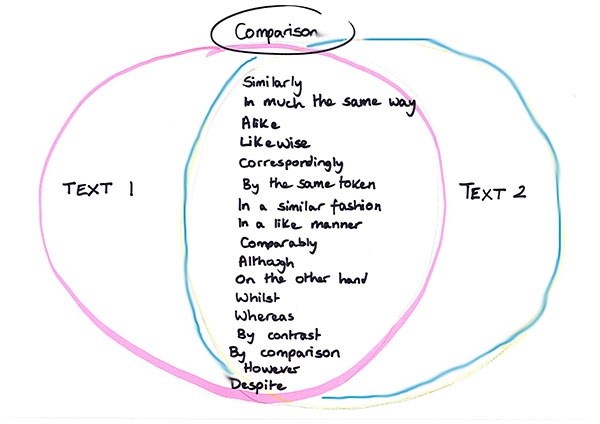Get exam ready for GCSE English Literature: Part 2 – comparing texts
11 April 2024
Lydia Ridding, English Subject Advisor

This blog was originally published in 2017, and has been updated with current resources.
This is the second of four blogs to support you with last minute exam practice for the OCR GCSE (9-1) English Literature exams later this month. It follows on from the first one which focused on quotations.
Here’s the order of play:
About comparing texts
The ability to compare and contrast texts is embedded in both the GCSE English Language and Literature courses, so students will no doubt have had plenty of exposure to different types of texts including approaches and strategies for making connections between texts. There is no hard and fast method for this, but it’s worth highlighting a couple of points in relation to the comparison questions featured in the GCSE English Literature exam papers.
- Draw attention to the guidelines for timings in the paper. Note that more time is recommended for part a) than for part b) to allow for the unseen element and comparing texts. But both parts of the question are worth the same number of marks (20 marks for each part, 40 marks in total). This is the case in both exam papers.
- It’s worth remembering that not all of that time needs to be spent writing your answer to the part a) question. Spending 10 minutes jotting down ideas and gathering your thoughts is a really good use of time.
- Remind students to make best use of the support offered in the bullet points.
- For the modern text comparison in Paper 1, students are reminded here to maintain focus on the extract from the studied text and not refer to the rest of this text. They won’t get extra credit for doing so. Related to which, consider the context of the two extracts here – the relevant contextual factors will be concerned with social and cultural situations or experiences, which can be inferred from details in the extracts.
The keyword in the question is compare – so students are thinking about the connections and similarities between modern text extracts (Paper 1) or poems (Paper 2) as well as the ways in which they are different. Differences can in fact prove easier and more illuminating to explore: for example, they might be found in the speaker’s tone, or the attitudes expressed toward the theme, the types of language used or the form and structure (poetry).
You’ll find specimen and past papers on our teacher site Teach Cambridge (login required, contact your Exams Officer for help).
Suggested activities
When comparing texts, evaluate the similarities and differences between texts in a systematic way, considering, for example:
- narrative voice
- theme
- tone/mood
- language techniques
- structure
- sentence variation
- punctuation for effect.
Consider using the following vocabulary when comparing texts:

As well as evaluative comment:

Making connections throughout
Using connectors is a good way of ensuring a balanced, purposeful response which interweaves comparison throughout. Tempting as it is for students to fall back on the familiar studied text or poem, at the risk of neglecting the unfamiliar text for comparison, this can lead to unbalanced responses which lack focus. In the very first trialling of sample questions for the GCSE (9-1) English Literature specification, students expressed confidence in having the familiar text to use as a springboard to make fresh and personal connections with a thematically linked unseen text.
Stay connected
Let us know if you’re finding this series of blogs helpful, and do get in touch if you have any questions. You can leave comments below, email us at English@ocr.org.uk or message us on X (formerly Twitter) @OCR_English. You can also sign up to receive email updates to keep up-to-date with the latest news, updates and resources.
About the author
Prior to joining OCR in June 2023, Lydia spent 20 years working in a range of sixth form colleges across the country, teaching A Level and GCSE qualifications in English. She was a coursework moderator with OCR for a number of years and has an MA in Victorian Studies from Birkbeck University.
Related blogs